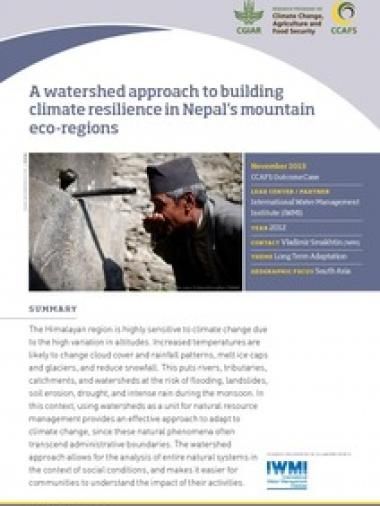A watershed approach to building climate resilience in Nepal’s mountain eco-regions

The Himalayan region is highly sensitive to climate change due to the high variation in altitudes. Increased temperatures are likely to change cloud cover and rainfall patterns, melt ice caps and glaciers, and reduce snowfall. This puts rivers, tributaries, catchments, and watersheds at the risk of flooding, landslides, soil erosion, drought, and intense rain during the monsoon. In this context, using watersheds as a unit for natural resource management provides an effective approach to adapt to climate change, since these natural phenomena often transcend administrative boundaries. The watershed approach allows for the analysis of entire natural systems in the context of social conditions, and makes it easier for communities to understand the impact of their activities.
Citation
CCAFS. 2016. A watershed approach to building climate resilience in Nepal’s mountain eco-regions. CCAFS Outcome Case. Copenhagen, Denmark: CGIAR Research Program on Climate Change, Agriculture and Food Security (CCAFS).